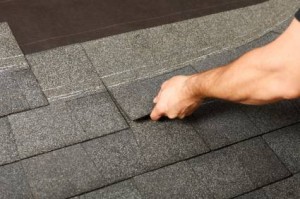Asphalt Shingles: How Long Will They Last?
Asphalt shingles tend to be the most popular of all types of residential roofing materials for a number of different reasons. If you  are worried about cost, that isn’t an issue with these shingles. They start at less than $1 per square-foot to have them installed, but the prices can go up from there. A variety of factors come into play when determining how much they cost, such as roof slope, geographical location, building height, accessibility, complexity, specific type of shingle used and numerous other factors.
are worried about cost, that isn’t an issue with these shingles. They start at less than $1 per square-foot to have them installed, but the prices can go up from there. A variety of factors come into play when determining how much they cost, such as roof slope, geographical location, building height, accessibility, complexity, specific type of shingle used and numerous other factors.
Asphalt shingles tend to be the easiest to install, which is why the cost of these shingles tends to be less than some of the other options on the market. They come in an array of different styles and colors, durability will vary based on shingle and they can easily be maintained and repaired.
The lifespan of these shingles will depend largely upon the environment in which they are installed. Shingles that are installed in cooler climates generally last longer than those that are installed in a warmer climate. Studies indicate that the average lifespan for 20-year shingles in Arizona is 14 years. In Minnesota, these same shingles last around 19.5 years, while Pennsylvania averages 20.8 years. It appears that the hotter the environment is, the shorter the time frame is for these shingles.
Thermal shock is very dangerous to shingles. This happens when the ambient temperature changes dramatically within a 24-hour time frame. If the temperature soars to around 100 degrees one day and drops to 40 the next, the dramatic shift can cause thermal shock to set in. The materials won’t be able to expand and contract in the manner in which they are supposed to. Splits and cracks in the materials begin to occur. Water will be able to enter into the materials and damage them extensively.
One of the things to consider is the damage that water does to this material in general. It’s not that water does damage to asphalt shingles, but the fungus and mold that sets in, as well as the continual presence of water on the roof, allows the fungus and algae to continue growing and flourishing in ways you never imagined. Another method that water can cause damage is from the freeze-thaw cycle. In the colder months, water gets into the cracks and freezes overnight. Since water expands when frozen, it causes more splits and cracks to occur. It is because of this that many roofing professionals prefer sloped roofs. The more the roof is able to shed water, the less likely problems will occur.
Another component is proper attic ventilation. Proper ventilation will help to extend the life of a roof. It’s uncertain whether it is the shingles themselves or the roof components that cause the change, but it seems to help the process along.
